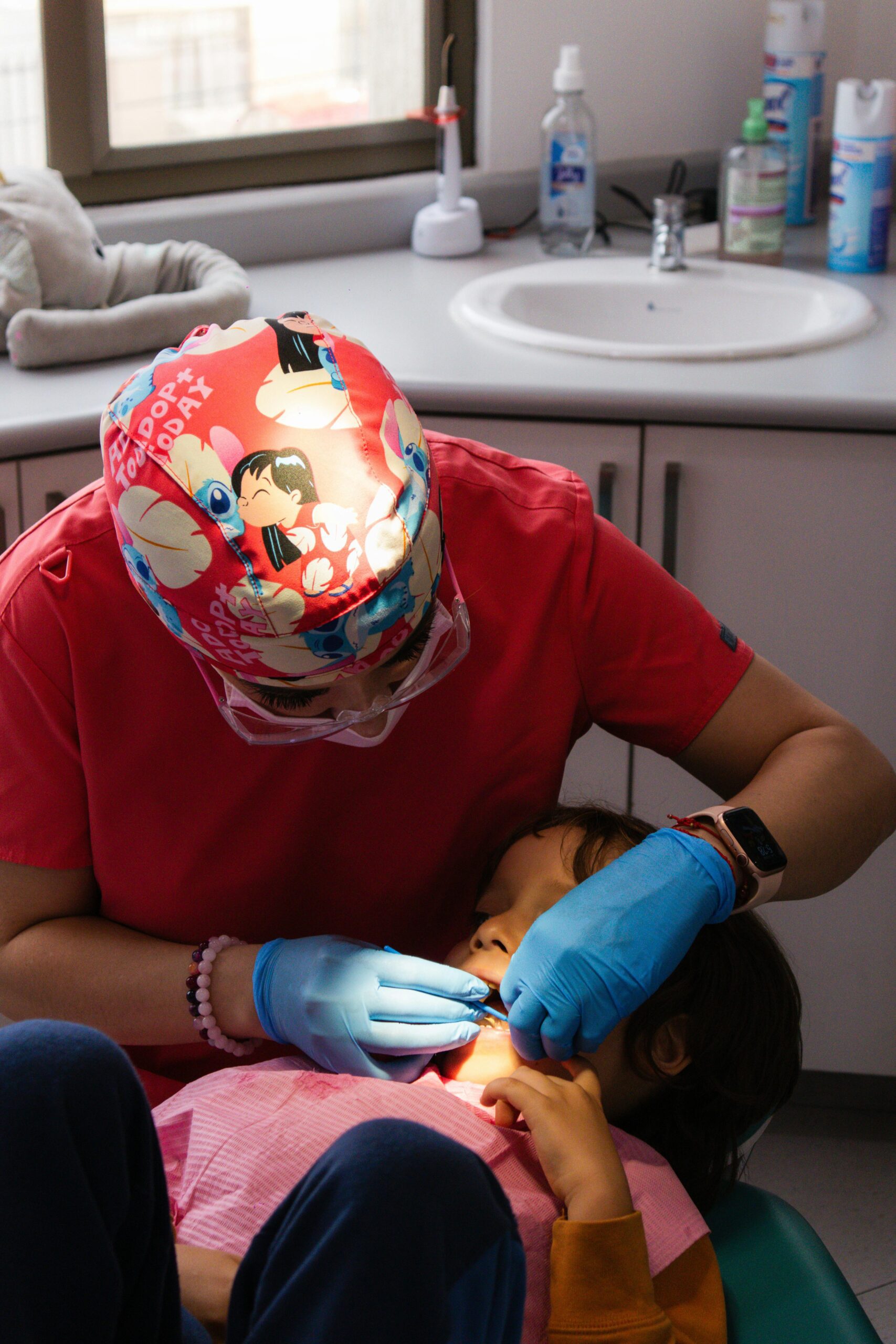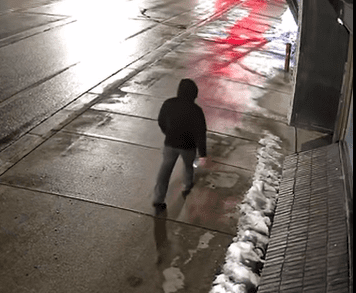A student from the Lansing School District decorates a sugar skull during their Hispanic Heritage Month Outreach.
Courtesy photo
By Deborah M. Walker
TNCPNEWS
LANSING, MI – Nestled in a working-class neighborhood, situated in a “mixed” community full of diverse people from various backgrounds, Casa de Rosado, an art gallery and cultural center, is a mecca for those looking to engage in the identity, culture, and heritage of an often underrepresented population. A long-time dream of its founder, Theresa Rosado, the gallery provides a safe space for the community to gather and learn about the rich history of Michigan’s Latinx and Chicanx people, stated Rosado.

Casa de Rosado Galería & Cultural Center is the only Hispanic/Latinx cultural center serving central Michigan.
Courtesy photo
Why diversity is important
With many events and showcases offered at Casa De Rosado, there is always something for the family or anyone interested in the arts to enjoy. Theresa said since her gallery opened in 2017, it has been a place for people to meet and explore identity. According to Theresa, there was a lack of Latinx and Chicanx influence and inclusion in the Lansing area. The gallery is the only Hispanic cultural and arts center serving mid-Michigan.
Although Lansing is bustling with arts and culture, these galleries tended to focus on commercial art. Theresa said this art was marketed toward a White mainstream audience. Casa de Rosado was started as a place for artists to get together and create a masterpiece with the freedom to be themselves.
“We believe in the power of transformative creativity and culture; this is an offshoot of traditional Turner Street artists, now known as Old Town,” said Rosado.
Where the exhibits come from
Casa de Rosado’s primary focus is Michigan artists, with most of the art being local and coming from the community. Artist Esmeralda Perez Gonzalez, a Chicana Mexican American, shared her work with the gallery. Theresa said Gonzalez’s inspiration for her powerful artwork is based on her Mexican American identity and how she navigates between the two worlds. Is it the pain and suffering of people but in beautiful fashions, said Rosado.
“The artwork helps to amplify the political strife many people in Mexico still face,” explained Rosado.
The Gallery has also hosted several LGBTQ+ artists. According to Theresa, the gallery was one of the first in the area to host such events. A popular LGBTQ+ exhibit that was shown at the gallery was from Sergei. His portraits portrayed “very discrete, but still very beautiful” artwork of nude males.
Sergei is from Russia, and Rosado said his native country is not welcoming to the gay community. In Russia, people can be imprisoned for their sexual identity and chosen gender. She explained that many people come to America to live freely.
Another exhibit is set to begin on Sunday, June 18, 2023. Casa de Rosado Galeria & Cultural Center will display the mixed media, prints, pastels, and drawings by the late Barb Morris, which span from the 1970s to her most recent work produced just before her stroke. The exhibition is open from June 18 through July 30. The opening reception is on June 18 from 12 to 5 p.m.
“On the opening, friends of Barb are welcome to share a memory, a poem, play a song on the keyboard or bring your instrument. Leave a note or small creative piece in memory of her on the ofrenda created in her memory. The Galleria is open on Saturdays and Sundays from 11 am to 5 pm,” stated the organization.
Most Popular Displays
The length of time an exhibit is on display varies. In the past, inhibits were left on display for a month; however, lately, the exhibits have been available for viewing for two months. Rosado said this gives people more time to see them and allows the gallery to focus on more outreach work.
Día de Los Muertos, also known as the Day of the Dead, is the most popular event at the gallery. Rosado has hosted Día de Los Muertos for 27 years. In Lansing, the event started as Rosado, an artist and assistant librarian, collaborated with Rosa Lopez Killips and Patricia Briones, both of the Lansing School District, to host the celebration in various schools, libraries, and galleries. The event has grown significantly over the years and is now funded by a City of Lansing Neighborhood Grant.
According to history, the Day of the Dead celebrations in modern-day Mexico and among people of Mexican origin in the United States and other countries have their roots in pre-Columbian Mesoamerican rites, which date back about 3,000 years.
At Casa de Rosado, Día de Los Muertos has become a way for the gallery to teach about Latinx and Chicanx culture, informed Rosado. Decades ago, in the 90s, people thought the Day of the Dead was a scary satanic ritual, declared Rosado. Over the years, much work has been done to educate people about the sacred event.
An oferenda made for a relative, such as a grandmother or a grandfather, is expected during the event. An oferenda is a Day of the Dead memorial that people make. They almost always have pictures on them. The oferendas are built in tiers; each tier has a special meaning. Rosado says there are many variations on how many tiers the alter can have.
Generally, the top tier represents heaven, and food is a central theme. Rosado explained that the dish served is usually a favorite of the loved one being remembered. “you are building a memory to welcome them back,” she added. Candles are also present. Wick candles are not allowed at the gallery because of fire hazards, so battery-operated candles and lights are used. Other Mexican traditions, such as serving pan de Muertos, a special sweet bread, are followed at the gallery.
Last year, 500 sugar skulls were made and handed out within the Lansing School District for the Day of the Dead. Sugar skulls represent the sweetness of life, explained the Yukan Times. The event sees about 500 people and has grown to two locations.
In addition to Día de Los Muertos, other popular events are held at the center, such as Fiesta Monarca. The next fiesta will occur this summer on July 30, 2023, from 12 pm to 5 pm at the gallery. The Monarch butterfly is currently an endangered species, explained Rosado.
“It’s an afternoon of seed giveaways, stories, tacos, handmade crafts, art demonstrations, music, Folklórico dance, and fun! As the Monarchs arrive from their long journey from Michoacan, Mexico, we host a fiesta to celebrate their return. Michoacán, Mexico hosts dance, food, and art festivals upon the arrival of the Monarch butterfly from the north,” informed the gallery.
People are encouraged to enjoy the fun-filled event and even dress up like a Monarch butterfly if they wish.
How to get artwork displayed at the gallery
Although Casa de Rosado focuses on the Chicanx and Latinx culture and art, everyone is welcome to apply to display their artwork at the center. For an exhibition to be considered for display, a Google form must be filled out and will be reviewed by the gallery.
Sometimes there are open calls for exhibits. The gallery hosts fundraising events in the summer to help pay for paying their featured artwork. Most of the artwork at the gallery focuses on Latinix heritage, but the gallery is inclusive.
Communication through the Facebook page is the best way to keep in touch with the happenings at the center. In the future, the gallery will have a Mailchimp newsletter to help keep the public informed about its events.
Rosado said there is no commission on the artwork sold at the gallery. Because most artists are local, working-class people, their financial burden, such as the costs of supplies, is considered.
A place to heal
Rosado said her husband died of brain cancer at the age of 42. She said the cultural center was a place to help her heal from the devastating loss and allowed her and others to have a safe place to overcome adversity.
“In our community, there has been much grief and many deaths. And then we had COVID,” informed Rosado.
COVID caused the gallery to shut down. Following the CDC guidelines, the center closed its doors when the pandemic initially started. The Galeria did reopen periodically during the shutdown. However, getting people to follow the social distancing and mask rules was difficult, and the gallery was shut down until the pandemic restrictions ended.
Rosado said the upside to COVID was that the shutdown forced the gallery to have more events outdoors and to enjoy the beautiful, Mexican-themed courtyard.
To learn more about Casa de Rosado, and to see the magnificent exhibitions, stop in at 204 E. Mount Hope Ave, Lansing, Michigan, 48910 or email the gallery at contact@casaderosado.org.




